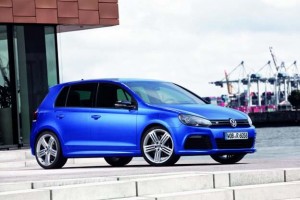The 2012 Beetle may be the biggest news story to emerge from this year’s New York Auto Show, but it isn’t the only new Volkswagen being shown at New York’s Jacob Javits Convention Center.
VW is planning big, the maker hoping to double U.S. sales, to 800,000 annually, by 2016. And, by then, it is hoping to overcome rivals Toyota and General Motors to become the world’s largest automaker. So, VW is rapidly rolling out a variety of new and updated products to fill gaps in its line-up.
On its NY Auto Show stand showgoers will find not only the all-new VW Beetle, but a high-performance version of the Golf, the Bulli Concept (think Microbus for modern times) that made its global debut at the Geneva Motor Show, in March, and a refreshed Tiguan crossover.
Let’s start with the Tiguan. The news is mostly limited to styling updates and a few new standard features, including a wireless cell phone link.
The 2012 VW Tiguan goes on sale this fall, and pricing has yet to be announced.
The Golf R is available as either a 2- or 4-door, and it has a 2.0-liter turbocharged four-cylinder engine that will make more power than the GTI. There will be all-wheel drive, a 6-speed manual transmission, sport brakes and suspension, 18-inch wheels, exterior and interior trim that’s special to the Golf R, and an antiskid system that is tuned in a sporting manner. Again, pricing wasn’t announced.
Finally, we come to the Bulli, a big, boxy van that evokes the classic Volkswagen Microbus of the hippie era. Powered by an electric motor with 114 horsepower and a 186-mile range, the Bulli could also conceivably use either VW’s 1.0- or 1.4-liter direct-injection gasoline engines. There is no shifter for the transmission, but rather a dial on the dashboard.
There’s seating for 6 passengers, and the rear seats can fold flat to be used as a bed. A dash-mounted iPad brings the hippie bus in line with the technology generation and controls several vehicle functions.
The concept’s name drawn from the term Germans once used for the Microbus, VW says it will be watching carefully to gauge consumer reaction to the design. That could justify putting it into production, though that would not likely be possible for at least several more years.

